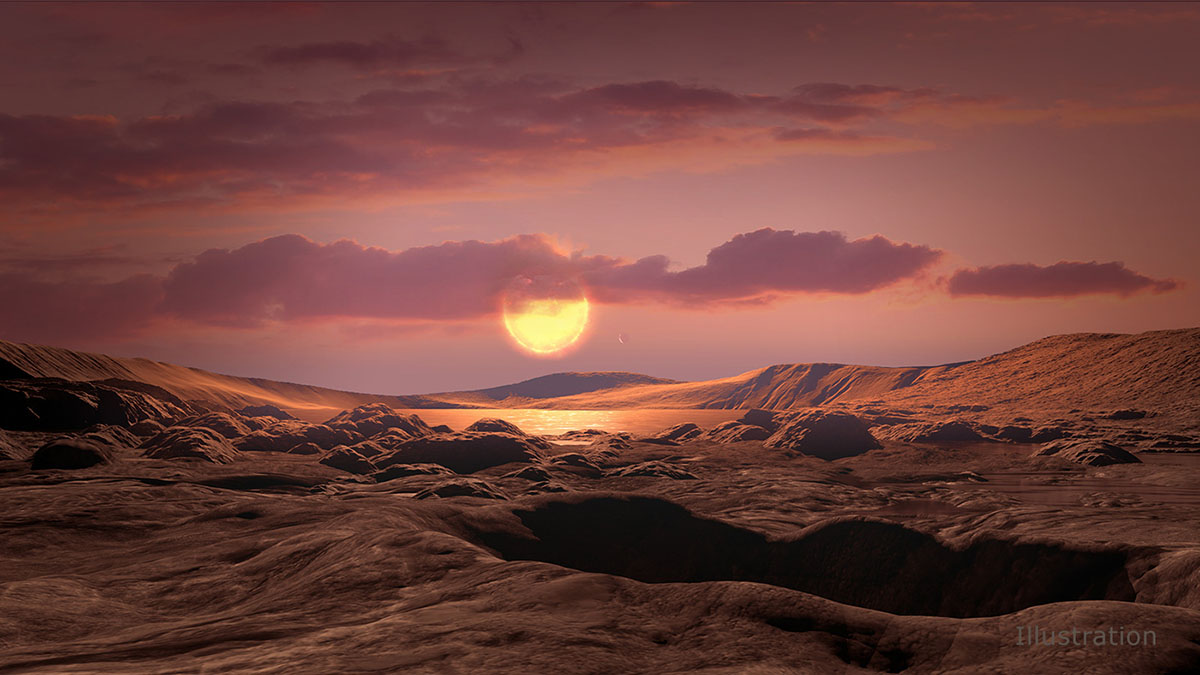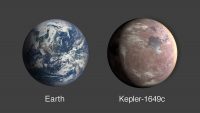This artist’s concept shows exoplanet Kepler-1649c orbiting around its host red dwarf star. This exoplanet is in its star’s habitable zone (the distance where liquid water could exist on the planet’s surface) and is the closest to Earth in size and temperature found yet in Kepler’s data. (NASA/Ames Research Center/Daniel Rutter)
Home This artist’s concept shows exoplanet Kepler-1649c orbiting around its host red dwarf star. This exoplanet is in its star’s habitable zone (the distance where liquid water could exist on the planet’s surface) and is the closest to Earth in size and temperature found yet in Kepler’s data. (NASA/Ames Research Center/Daniel Rutter) This artist's concept shows exoplanet Kepler-1649c orbiting around its host red dwarf star. This exoplanet is in its star's habitable zone (the distance where liquid water could exist on the planet's surface) and is the closest to Earth in size and temperature found yet in Kepler's data. (NASA/Ames Research Center/Daniel Rutter)
This artist’s concept shows exoplanet Kepler-1649c orbiting around its host red dwarf star. This exoplanet is in its star’s habitable zone (the distance where liquid water could exist on the planet’s surface) and is the closest to Earth in size and temperature found yet in Kepler’s data. (NASA/Ames Research Center/Daniel Rutter)




